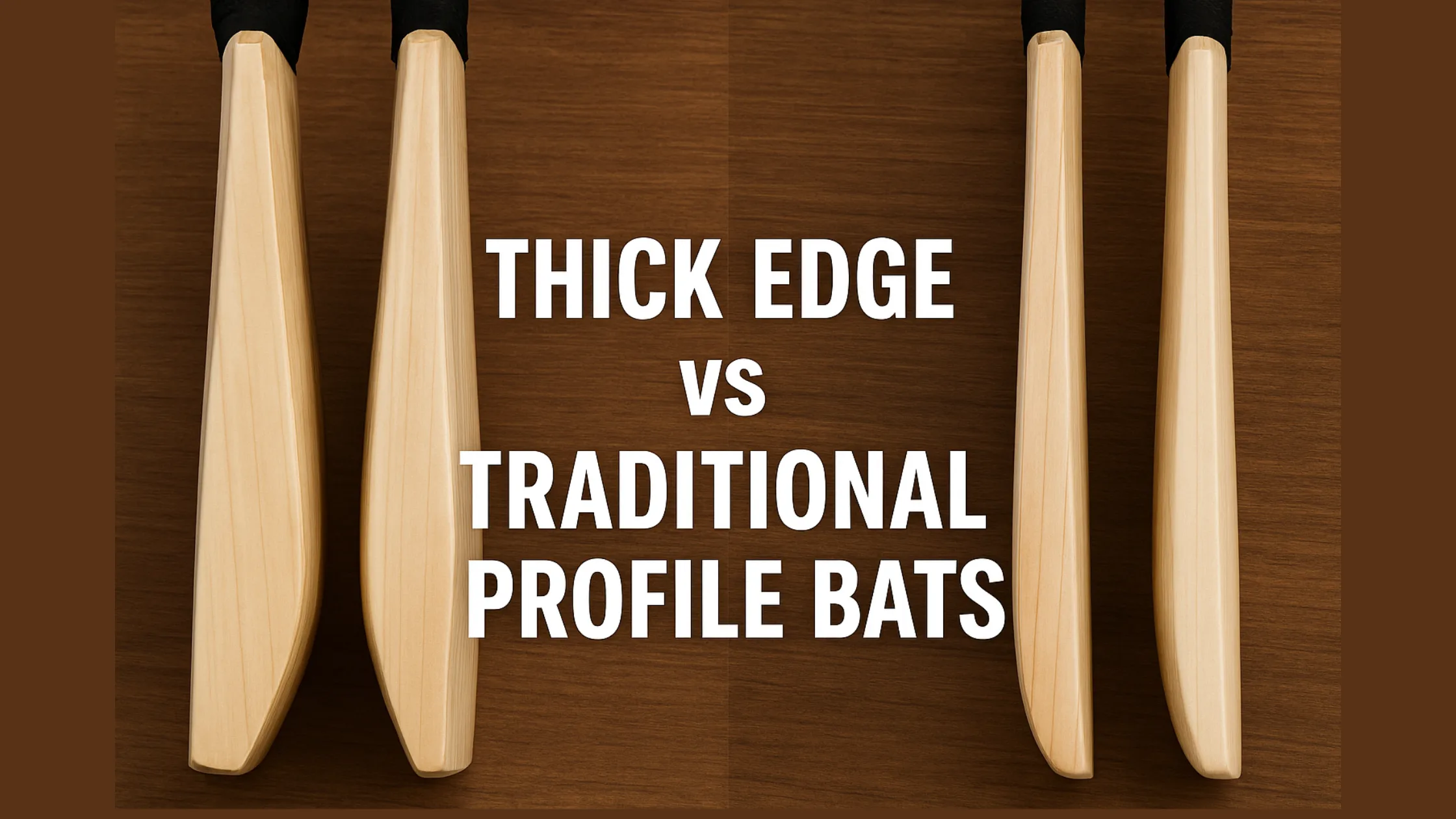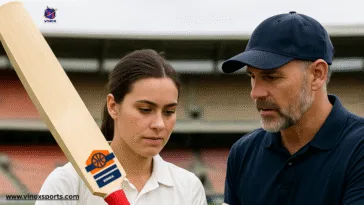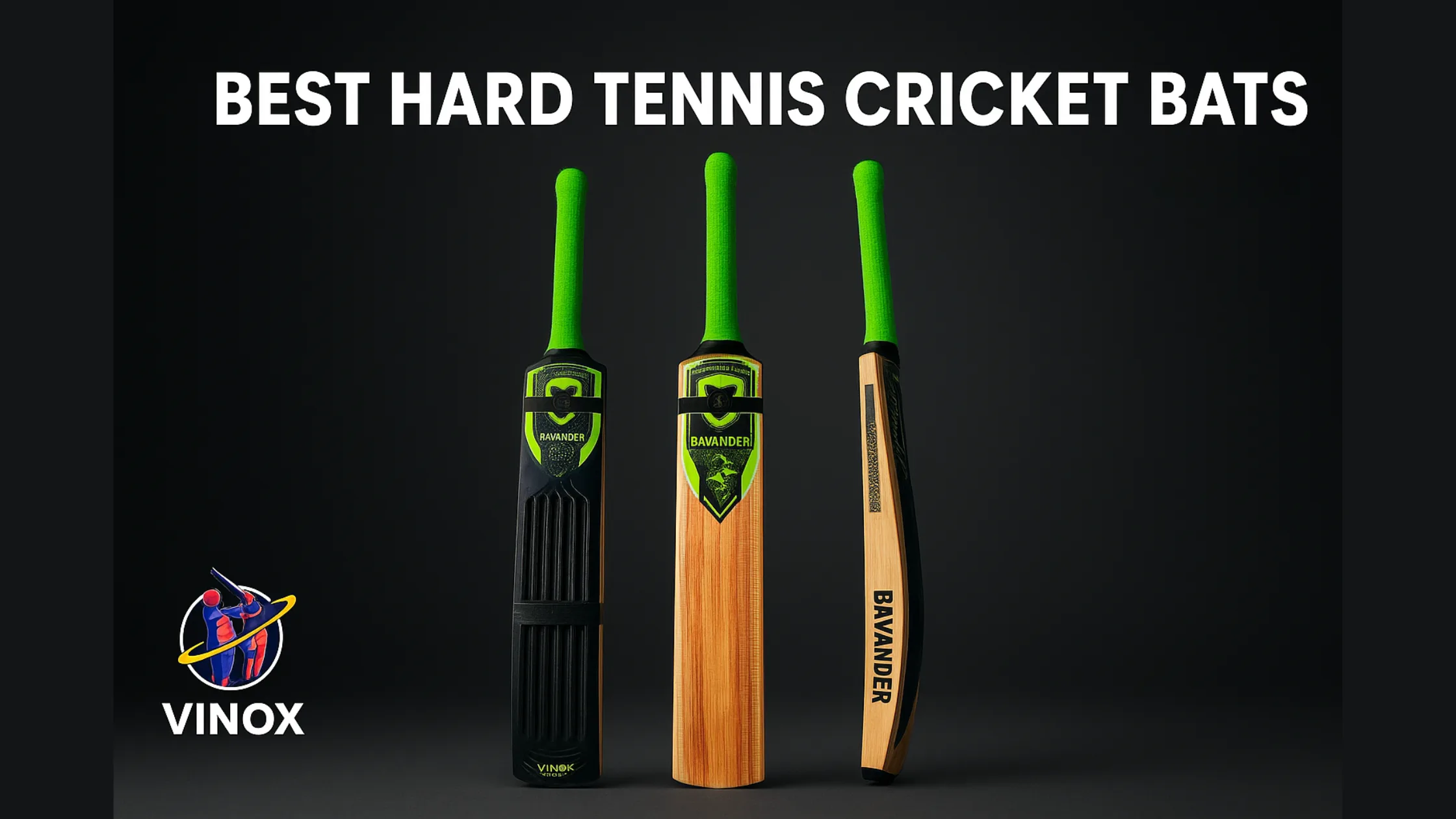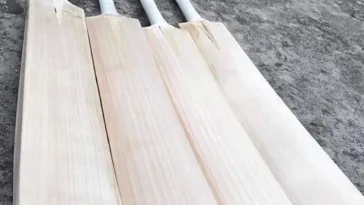Introduction
When it comes to selecting the right cricket bat, the debate between thick edge bats vs traditional profile bats has become increasingly important. Both designs have their strengths and limitations, and choosing the right one can dramatically affect your game performance. But which one is right for you? In this blog, we’ll break down the pros and cons of each bat design and help you determine which bat suits your playing style the best.
“Explore our full range of thick edge and traditional profile cricket bats on the Vinox Sports online store and find the perfect match for your playing style.”
What Is a Thick Edge Cricket Bat?
A thick edge bat is a modern design innovation in cricket bats that features enhanced edge thickness—sometimes going beyond 40mm. These bats are primarily known for:
Increased power in off-center hits
Larger sweet spot
Heavier feel (usually around 1200g or more)
Popular among power hitters and T20 players
Thick edge bats are ideal for aggressive stroke play and help batters clear the boundary more often with less effort.
What Is a Traditional Profile Bat?
Traditional profile bats stick to the classical form of bat-making with a curved spine, thinner edges (usually around 30-34mm), and a lighter pickup. They offer:
Better control and timing
Lightweight pickup for quick singles
Preferred by Test cricketers and classical batters
Balanced weight distribution
This type of bat suits players who rely on wrist work, placement, and technique more than brute force.
Comparison Table: Thick Edge vs Traditional Profile
| Feature | Thick Edge Bat | Traditional Profile Bat |
|---|---|---|
| Edge Thickness | 38mm – 45mm | 30mm – 34mm |
| Sweet Spot | Extended, larger zone | Mid to low |
| Pickup | Slightly heavy | Light and balanced |
| Ideal Format | T20 and One Day Internationals | Test and longer formats |
| Batting Style | Power-hitting | Classic stroke play |
| Control | Moderate | High |
| Durability | Higher (due to bulk) | Moderate |
| Popular Users | MS Dhoni, Andre Russell | Sachin Tendulkar, Kane Williamson |
Advantages of Thick Edge Bats
✅ 1. Explosive Power
The thick edges provide more wood behind the ball, resulting in explosive power even on mishits.
✅ 2. Ideal for T20 Format
T20 cricket demands fast scoring and boundary-hitting. Thick edge bats suit aggressive batting styles, making them perfect for this format.
✅ 3. Large Sweet Spot
With more surface area, your chances of hitting clean shots—even if not centered—are significantly higher.
Disadvantages of Thick Edge Bats
❌ 1. Heavier Weight
The increased thickness adds weight, which may cause fatigue during long innings or reduce bat speed for some players.
❌ 2. Reduced Control
These bats aren’t ideal for players who rely on placement and timing over raw power.
Advantages of Traditional Profile Bats
✅ 1. Superior Bat Control
Thinner edges and balanced weight offer better control, allowing players to time shots perfectly.
✅ 2. Lighter Feel
Traditional bats are lightweight, making them suitable for longer innings without tiring the batter.
✅ 3. Suitable for All Formats
Especially effective in Test matches where endurance and precision matter more than power.
Disadvantages of Traditional Profile Bats
❌ 1. Smaller Sweet Spot
With a more defined center, off-center hits may not travel as far compared to thick edge bats.
❌ 2. Less Forgiving
Mishits may result in lesser runs or even dismissals due to the thinner edge and smaller power zone.
Which Bat Suits Your Playing Style?
Choosing between a thick edge and a traditional profile bat ultimately comes down to your batting style and the format of the game.
🎯 Choose a Thick Edge Bat If You:
Play T20 or limited-over matches
Are a middle-order power-hitter
Want to clear boundaries effortlessly
Prefer modern cricket with aggressive play
🎯 Choose a Traditional Profile Bat If You:
Play Test or longer innings
Rely on timing, technique, and placement
Are a top-order batter who builds innings
Like a lighter pickup and better maneuverability
Player Recommendations
🔥 Famous Players Who Use Thick Edge Bats:
David Warner – aggressive style, fast scoring
Hardik Pandya – all-rounder, boundary-hitter
Kieron Pollard – explosive power in death overs
🧠 Famous Players Who Prefer Traditional Profile Bats:
Kane Williamson – elegant timing and stroke play
Cheteshwar Pujara – classical Test batting
Rahul Dravid – master of technique and defense
Tips for Choosing the Right Bat
Weight Test: Always pick a bat that feels comfortable in your hand, not just the one that looks good.
Sweet Spot Location: Choose a bat with a sweet spot that aligns with your playing style—higher for backfoot players, lower for front footers.
Bat Handle Type: Oval handles offer better control; round handles are more suitable for flicks and aggressive play.
Bat Wood Type: English willow is preferred for professional play, while Kashmir and Siberian willow bats are good for training or local matches.
Conclusion
So, which design suits your playing style: thick edge or traditional profile? The answer depends on how you approach your batting game. If you’re a modern-day T20 beast looking for power and distance, the thick edge bat is your weapon of choice. But if you’re a technique-focused batter who loves long innings and classical cricket, then nothing beats the elegance of a traditional profile bat.
At the end of the day, your cricket bat should complement your natural style and give you confidence at the crease. Explore different models, try both types, and then make an informed decision.
Shop Your Perfect Bat at Vinox Sports
Looking for the best selection of thick edge bats and traditional profile bats? At Vinox Sports, we offer high-performance bats tailored to every player’s need. Whether you’re gearing up for the next T20 or prepping for your first Test innings, we’ve got you covered.





 No products in the cart.
No products in the cart.